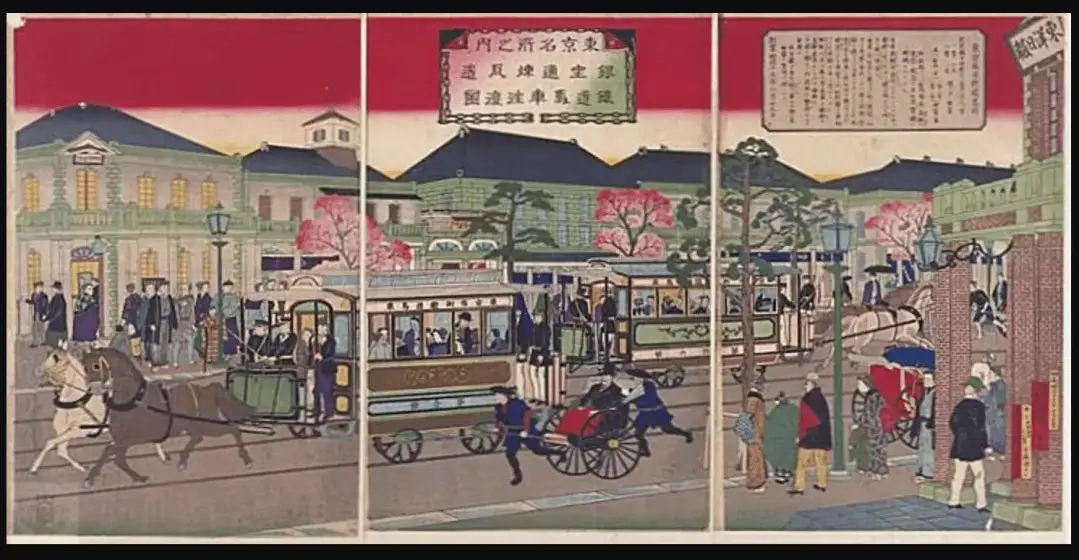The Meiji Era is an extremely popular period of Japanese history. This period has inspired everything from books to plays to anime — and with good reason.
Meiji times featured revolutionary changes to Japan’s government, and huge advancements in culture and technology. It was also a time of military expansion.
For better or for worse, the period built the foundation for modern Japan.
Table of Contents
- Meiji Era Summary
- Perry Sets the Stage
- Around the World in Three Years
- Meiji Culture and Technology
- Meiji Government
- The Meiji Empire Grows
Meiji Era Summary
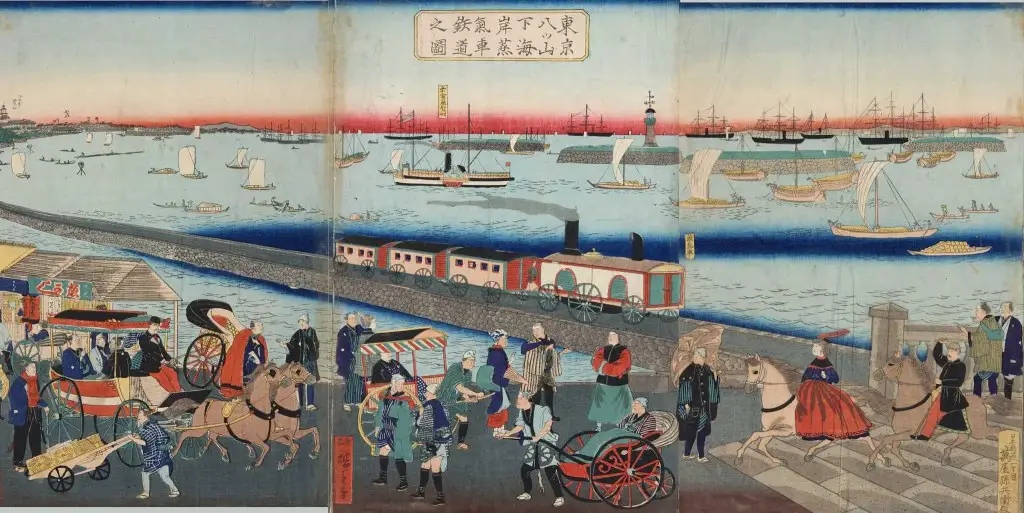
The Meiji Era ran from 1868 to 1912. It’s named for Emperor Meiji, a.k.a. Mutsuhito, who ruled Japan for four decades. It overlaps somewhat imperfectly with Great Britain’s Victorian Era.
During Emperor Meiji’s reign, Japan created a new constitution, and established a parliament, the Imperial Diet (since reorganized as today’s National Diet). The nation’s capital moved from Kyoto to Edo, which was renamed Tokyo.
Japan also sent diplomats around the globe to find out what the world was like. The country modernized its military, and won a couple of wars which expanded the empire.
The Meiji Era was also a period of industrialization, as Japan rushed to catch up with the Industrial Revolution. This economic growth required an understanding of Western ideas.
The government encouraged Western technology and ideas to spread. Naturally, Meiji Japanese society was heavily influenced by this Western push.
As you can see, a lot happened during this long period of development, growth, expansion, and modernization.
Perry Sets the Stage
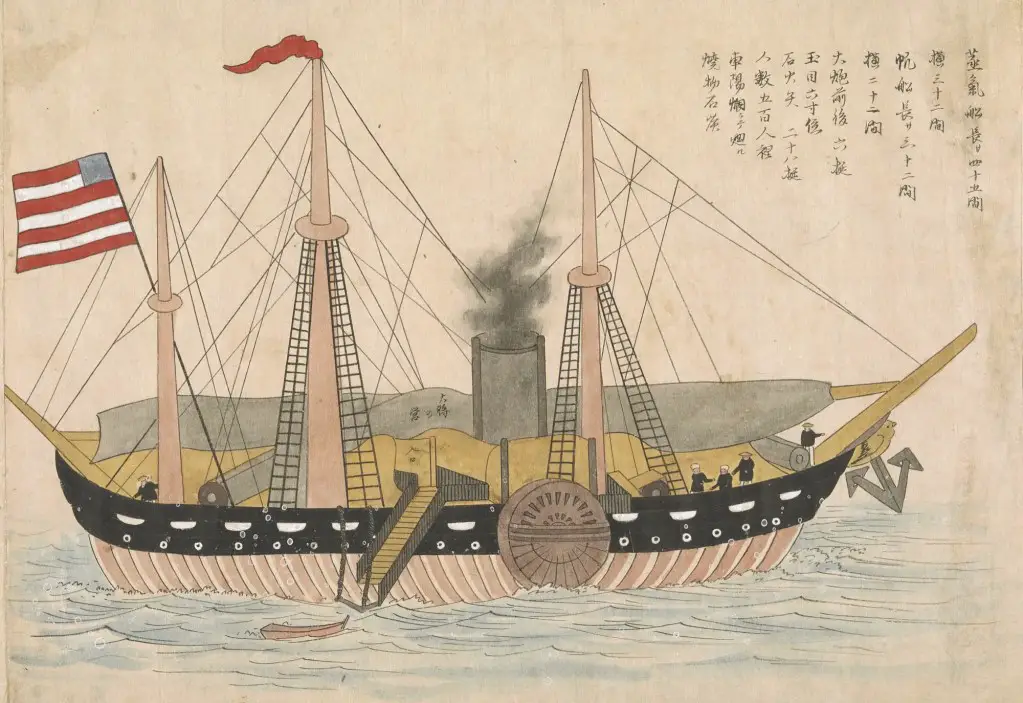
Although it happened before the era officially began, the history of the Meiji Era would not be complete without the “opening up” of Japan by the United States in the 1850s.
The arrival of Commodore Matthew Perry and his “Black Ships” in 1853 and 1854 shocked the Japanese. Japan was forced to sign unequal treaties which favored the U.S. and Europeans.
The Tokugawa Shogunate’s apparent inability to deal with this crisis caused a bloody period of revolts and rebellion known as the Bakumatsu.
This resulted in the resignation of Shogun Tokugawa Yoshinobu (“Keiki”) in 1867, and the restoration of the emperor to power. In January 1867, Emperor Komei died. His son took the Chrysanthemum Throne shortly afterward.
Thanks to all of this, the Meiji Era began in October 1868, but not without some final conflicts. The Boshin War (1868-1869) featured the Choshu, Tosa, and Satsuma domains fighting those still loyal to the shogunate. Even after the restoration, there were still more samurai revolts — finally ending with the Satsuma Rebellion of 1877.
Around The World in Three Years

Since 1603, Japan had been mostly isolated from the rest of the world for more than 200 years. The Meiji government knew that Japan needed to modernize in a hurry, or suffer the same fate as China’s “Century of Humiliation.”
With that in mind, more than 100 Japanese statesmen and scholars went on an around-the-world diplomatic journey known as the Iwakura Mission (1871-1873). The mission visited many places in the U.S., including San Francisco, Washington, D.C., New York City, and Boston, before continuing on to Europe.
In Europe, they criss-crossed the entire continent, touring London, Paris, Brussels, Amsterdam, Berlin, St. Petersburg, Copenhagen, Stockholm, Vienna, Geneva, and Rome, among other places.
Along the way, they visited schools and universities, dockyards, factories, textile manufacturers, military institutions, hospitals, the London Underground, and more.
This epic journey would have a lasting effect on Japan’s modernization efforts.
Meiji Culture and Technology
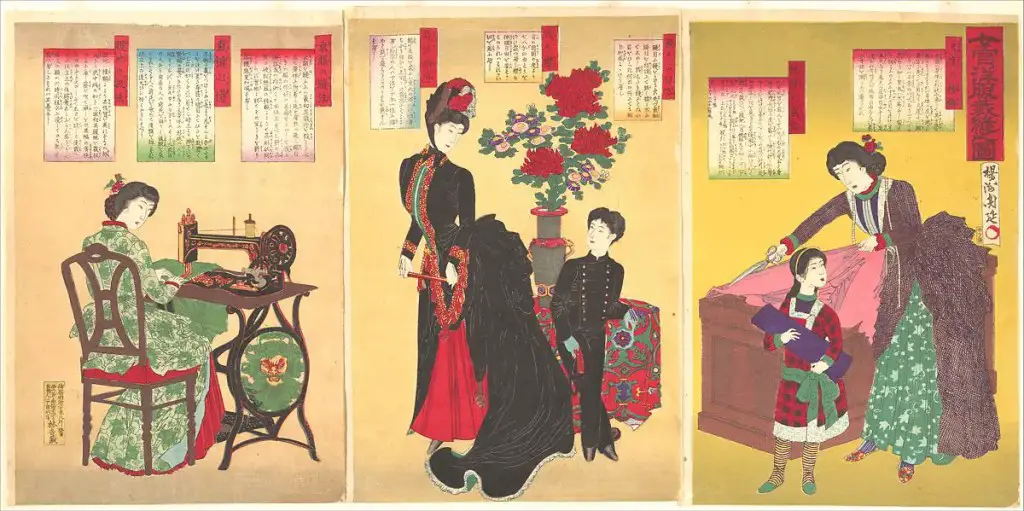
The Meiji Era brought forth huge changes to Japanese culture and technology.
For example, the feudal and noble samurai swordsmen became obsolete. Samurai swords were replaced by guns and rifles.
Instead, the new era emphasized a new social class — rich businessmen and oligarchs (some of whom were also forward-thinking feudal lords). These industrialists established Japan’s zaibatsu — family-owned business conglomerates.
This new business class wore Western-style suits instead of the traditional kimono. With the support of the emperor, Western fashion started to replace more traditional styles, especially amongst the elite in the cities. (The poor, who couldn’t afford new clothes, and more tradition-minded people were slower to adopt these changes.)
Many Western foods were also introduced, although often adapted to Japanese taste. For example:
- Tonkatsu – a Japanese-style version of German schnitzel
- Curry – originally from India, but modified by Great Britain
- Nikujaga – probably a variant of British Navy beef stew
- Ramune – a carbonated lemonade with Western roots
The new era also saw Japan’s first steam trains and electric streetcar lines, the redevelopment of Tokyo’s Ginza as a modern “bricktown,” and the introduction of gas and electric lights.
Meiji Government
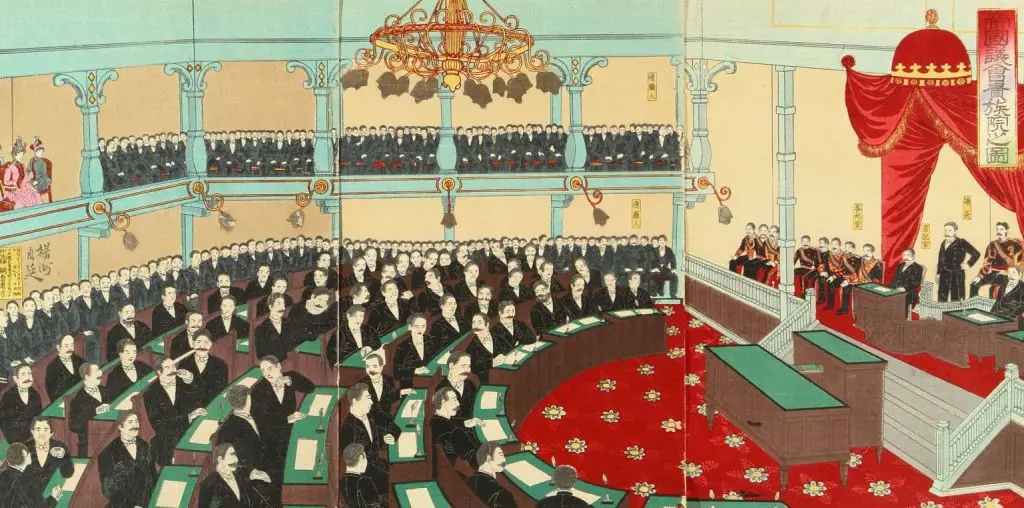
Prior to the Meiji Restoration, Japan had a feudal, military-run government. The shogun held centralized, national control. But local daimyos (feudal lords) had their own local policies within their domains.
However, the country had no written constitution, and there were certainly no democratic institutions.
When the shogunate fell, the leaders of the revolution lacked consensus over what to do next, beyond the common goal of restoring the emperor.
In April 1868, the new emperor released the Charter Oath, which provided a vague outline for modernization. This included “deliberative assemblies,” allowing people to move freely, and the quest for knowledge.
Some political organizations supported the idea of democracy, while the more conservative oligarchs were suspicious of the concept.
After a great deal of debate, Japan adopted its first written constitution in 1889.
The new constitution, based on British and German ideas, created a bicameral parliament (the Imperial Diet). But it also kept the divine emperor as the head of the government. The emperor had final approval for any new laws created by parliament.
He also appointed a cabinet of ministers, which was led by a prime minister.
Democratic elections were limited to voting for the House of Representatives (the lower house of the Diet).
The upper house, or House of Peers, was Japan’s equivalent to Great Britain’s House of Lords. The peerage combined a mixture of former daimyo, and imperial court nobles.
Politically, the Meiji Era saw slow, steady progress — the first elections were limited to men who met very restrictive tax requirements. These limitations would slowly be eased.
For the first half of the Meiji Era, oligarchs held a lot of political power. But as voting grew, political parties also started to gain power.
The Meiji Empire Grows
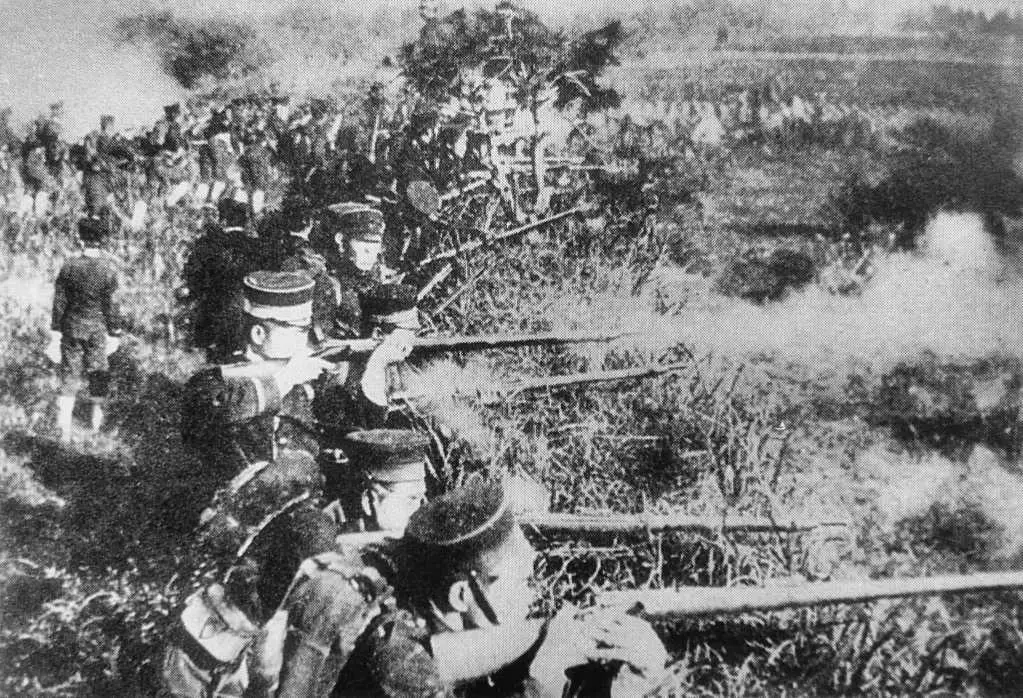
At the beginning of the Meiji Era, Japan’s military was antiquated compared to the U.S. and Europe.
In response, the Meiji government hired Western experts to provide engineering knowledge, training, etc. Japan also sent men to train and study at foreign military academies. Japan would soon engage in international battles close to home:
- In the First Sino-Japanese War (1894-1895), Japan defeated China in Korea. Prior to the war, Meiji Japan had hoped to trade with the Koreans. However, China also had a strong interest in the peninsula. Various incidents led to war between the two nations.
- During China’s Boxer Rebellion (1899-1901), Japan was part of the Eight-Nation Alliance which helped defeat the “Boxers.” In addition to Japan, the alliance included the U.S., Great Britain, Russia, France, Italy, Austro-Hungary, and Germany. This would help cement the Anglo-Japanese Alliance, starting in 1902.
- In the Russo-Japanese War (1904-1905), Japan defeated Russia. The war was fought over control of Manchuria and Korea. It led to Japan annexing Korea in 1910.
As a result of these wars, the Japanese Empire expanded to include Taiwan, Korea, and parts of Manchuria.
Conclusion
The Meiji Era changed Japan in many ways. It pulled Japan up from a feudal nation to a modern one. And this modernization would continue in the Taisho era and Showa era that followed.
I hope this basic overview helps you better understand this revolutionary period.

